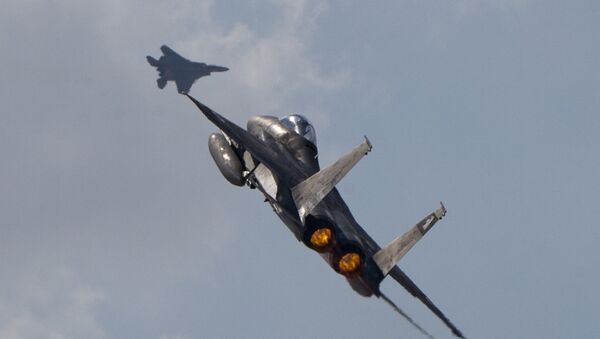Former Israeli Defense Minister Amir Peretz shared with the press the dilemmas he and his colleagues were facing after it was clear that an average-looking building in the Syrian province Deir ez-Zor turned out to be a nuclear facility under construction.
As the Israel Defense Forces (IDF) has revealed, during the night of September 5th and 6th, 2007, the Israeli Air Force destroyed a nuclear facility in its final stages of construction using F-16I “Sufa” (storm) and F-15I Ra'am (thunder) jets. The IDF stated that it prevented escalation in the region and eliminated a nuclear threat not only to Israel, but to other countries. While the whole operation lasted just four hours, preparations for the Operation Orchard took months.
Peretz told the Jerusalem post, that as early as March, 2007 the Israeli intelligence service Mossad took photos of the mysterious building near the borders of Turkey and Iraq, which they believed, proved its connection to the Syrian nuclear program, which was assisted by North Korea.
One of the key risks, he revealed, which could have disastrous consequences, was choosing the wrong moment.
“The timing of when to strike had to be based on many things, including if the reactor was ‘hot,’ it would risk having major health repercussions for citizens along the Euphrates for at least the next 100 years,” he told the press.
Another question that was being debated was whether to share information with the country’s allies. Israel did its best to prevent any leak to the media, which could lead to worldwide opposition to the strike, but Peretz still shared the intelligence with the US.
It was later reported to the United Nations that North Korea sent two shipments to the Syrian government, which were eventually intercepted. The final destination was the Syrian Scientific Studies and Research Center, which was conducting nuclear research and developed ballistic missiles and air defense.
One of the pilots in the attacking team told the Jerusalem Post that he and his team trained for several months, only being informed about the target on the day of the attack. On X-day, Israeli Air Force commander Eliezer Shkedi came to brief them right after then Prime Minister Ehud Olmert and his security cabinet voted for the bombing.
“We didn’t have that much time to think about it, but it was definitely something that made me stop and say ‘Wow,’” the pilot said.
According to the media, former Israeli intelligence chief Amos Yadlin claimed the strike was intended to send a message to world powers that Israel would “enforce its red lines to protect its citizens, despite the great powers ignoring them.”
READ MORE: Israeli Intel Minister: 2007 Strike on "Syrian Nuclear Reactor" Message to Iran
This was the second time that Israel eliminated one of its rivals’ “rogue” nuclear reactors. The first one was Iraqi’s Osirak reactor in 1981, when Saddam Hussein governed the country.




